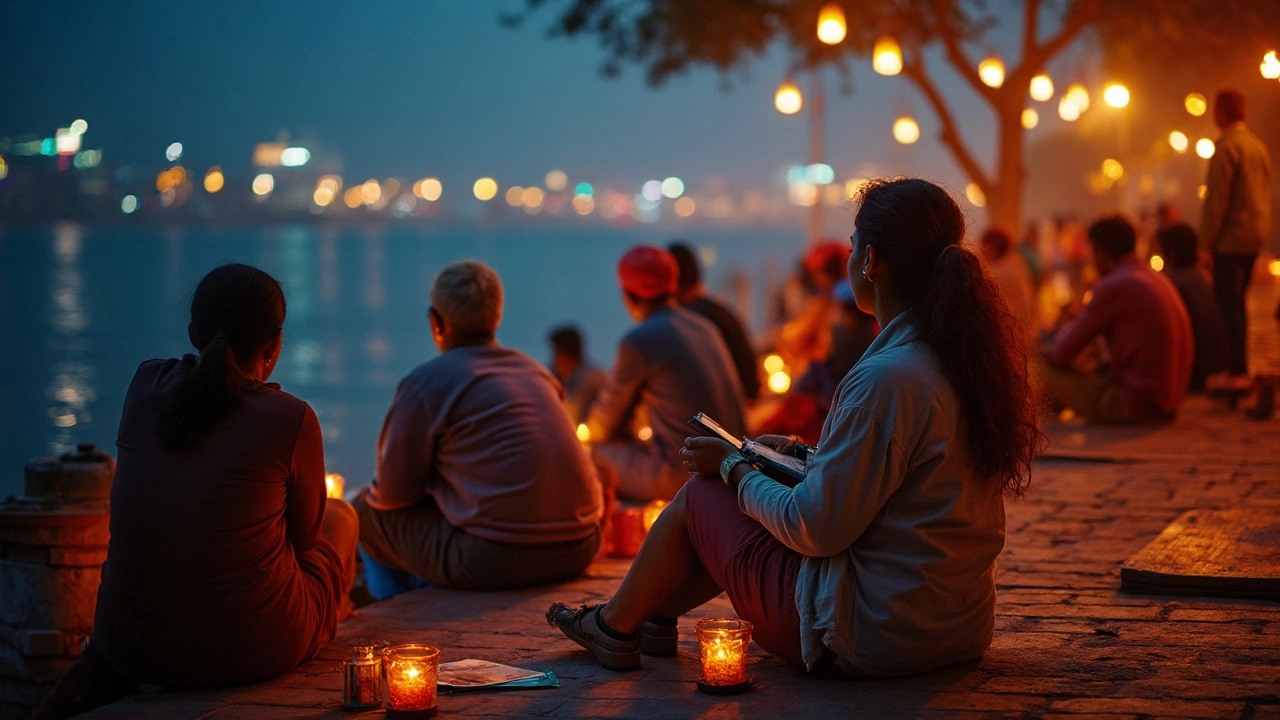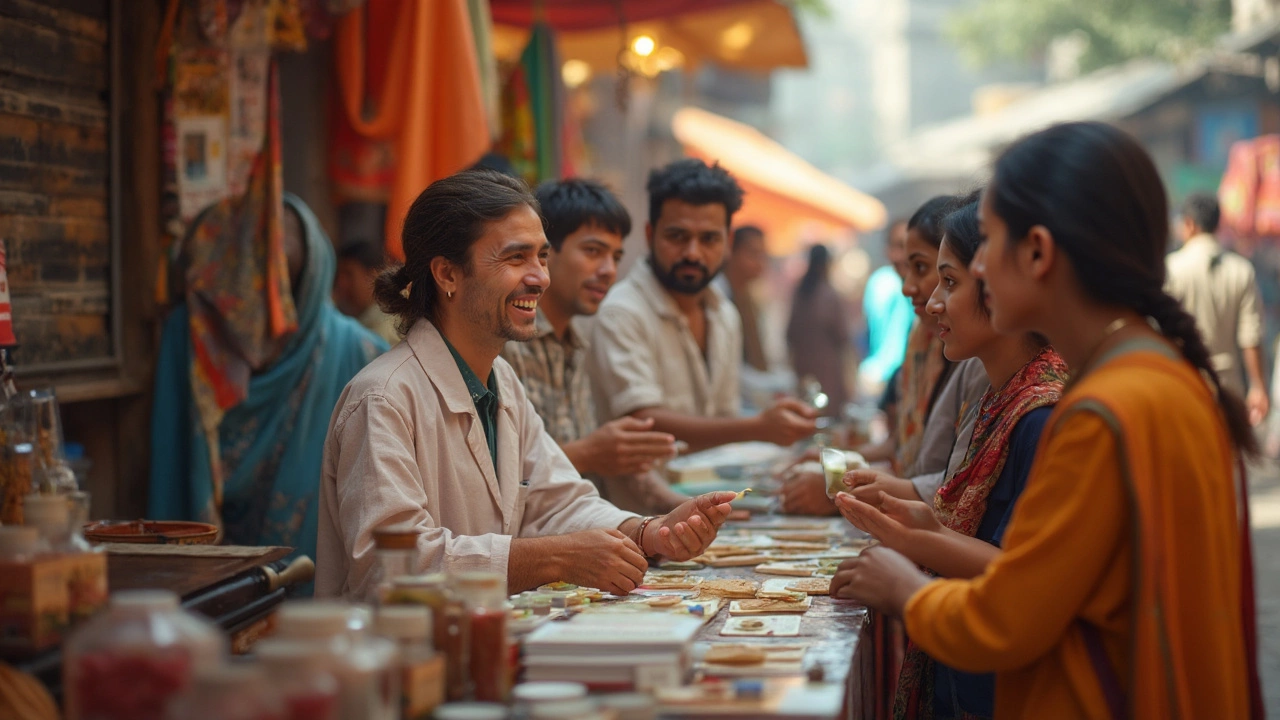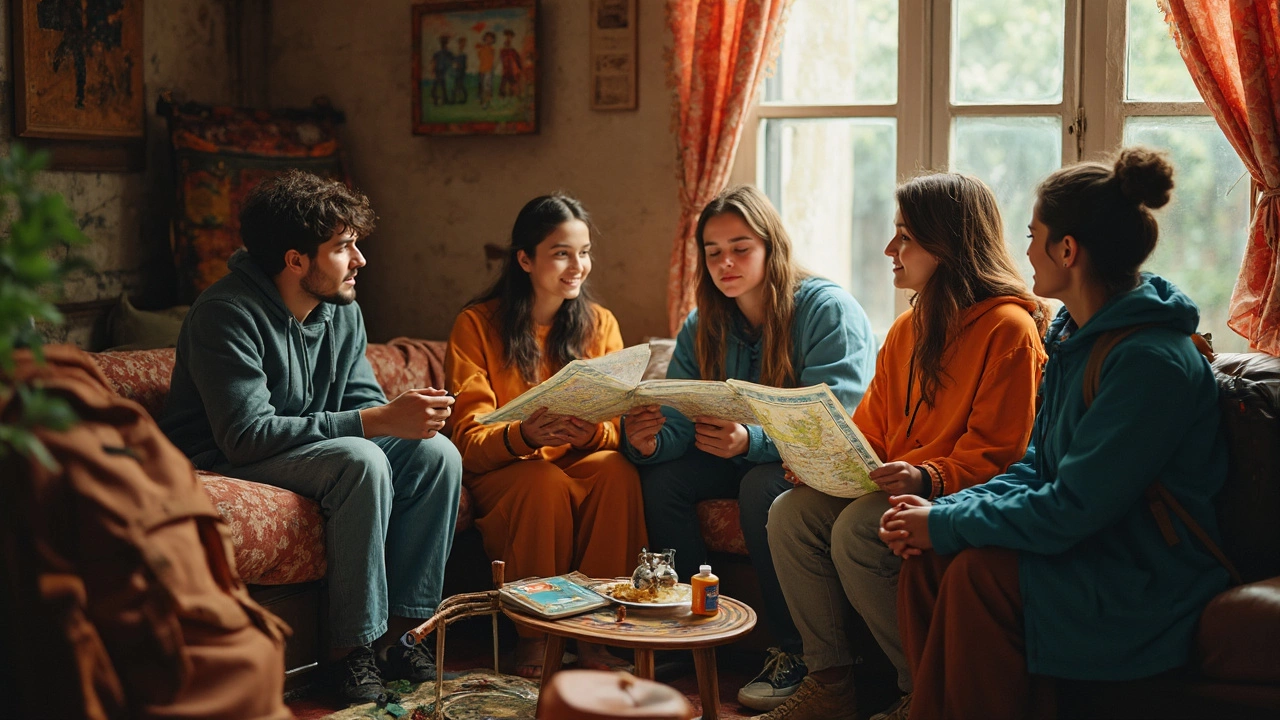Picture this: you've booked your dream trip to India, your e-visa is ready, and you tell your friends—first thing they ask is, "Aren't you worried about malaria?" Sound familiar? If your itinerary sticks to places like Delhi, Agra, Jaipur, or the mountain cities in Himachal, the odds that you actually need those little malaria pills may not be as high as you think.
Why the confusion? Online forums, old guidebooks, and even some clinics love to err on the side of caution. But honestly, malaria risk in most of North India’s major tourist spots is pretty low now, especially if you’re not traveling during peak monsoon or heading into remote forests. You do want to be smart, though—mosquito bites are annoying even without malaria in the picture. So here's how to figure out whether popping malaria pills is really necessary and what else you can do to keep the bugs at bay. No one wants their holiday memories ruined by a preventable illness—or by unnecessary meds, for that matter.
- Understanding Malaria Risk in North India
- Who Actually Needs Malaria Pills?
- Alternative Ways to Prevent Malaria
- Talking to Your Doctor: What to Ask
- Smart Tips for a Safe and Healthy Trip
Understanding Malaria Risk in North India
If you're visiting North India, hearing about malaria might make you worry a bit, but here’s the deal: cases are actually way lower than they used to be in this region. Most travelers hitting the usual spots like Delhi, Agra, Jaipur, or even Shimla and Manali barely face any malaria threat. The risk drops even more in higher altitudes—mosquitoes just don’t love the cold.
The big difference comes with the season. Malaria is spread by mosquitoes, most active during the monsoon (roughly June through September), when everything gets warmer and wetter. But even then, the actual number of reported cases has dropped a lot over the last decade thanks to better public health campaigns, treated nets, and community spraying in major cities.
Let’s look at some numbers for a clearer picture:
| Location | Malaria Cases in 2023 | Risk Level for Tourists |
|---|---|---|
| Delhi | 202 | Very Low |
| Agra | 74 | Very Low |
| Jaipur | 60 | Very Low |
| Himachal (Shimla/Manali) | 21 | Negligible |
| Rural UP/Bihar (select spots) | 432 | Low to Moderate |
Most travelers don’t hang around the rural, swampy zones where malaria is more common. Those places aren’t usually part of tourist trails anyway. If you plan to volunteer, camp, or spend a lot of time in fields or villages during the rainy season, talk to your doc about your options. But if you’re sticking with touristy cities, you can breathe a bit easier.
For regular sightseeing in North India, especially if you’re worried about malaria pills, the current stats and recommendations say the risk is just not that high. Keep checking for updated advice, since things can change, but most official guidelines in 2025 still say pills are usually optional for the main travel routes.
Who Actually Needs Malaria Pills?
This is the big question everyone asks before packing for India. Do all travelers coming to North India need to carry malaria pills in their toiletry bag? Not really. The answer depends a lot on where you’re headed, the time of year, and your personal health.
Most major tourist areas in North India—think Delhi, Jaipur, Agra, Amritsar, most of Rajasthan, and the Himalayan foothills—have low malaria risk these days. Indian health authorities and the World Health Organization both say malaria cases in these northern hotspots have dropped a lot over the last decade. For example, the Ministry of Health in India reported in 2024 that Himachal Pradesh, Punjab, and Delhi recorded almost no indigenous malaria transmission. Look at this data from late 2024:
| Region | Reported Malaria Cases (2024) | WHO Risk Level |
|---|---|---|
| Delhi | Less than 50 | Very Low |
| Rajasthan | 100 – 200 | Low |
| Uttar Pradesh | 300 – 500 | Moderate |
| Himachal Pradesh | Fewer than 10 | Very Low |
So, who does need malaria pills?
- If you’re visiting remote, rural areas—think off-the-map villages, jungles, or far-flung national parks—especially in the monsoon season (June–September), your risk goes up. More mosquitos, more standing water, more chances for malaria.
- If you plan to travel in regions known for higher malaria rates (like some parts of Odisha, Chhattisgarh, or the North-East—not the usual North India tourism circuit), it’s a different story. Pills are sensible here.
- If you’re immunocompromised, traveling with young kids, or pregnant, doctors might err on the side of caution no matter where you’re going. Always ask your healthcare provider about your particular situation.
If you’re mostly in bigger cities and standard tourist routes during dry season, most travel doctors agree malaria pills aren’t usually recommended. Here’s what the CDC’s 2025 guidance says:
“For travelers to the main urban centers and most of North India, routine malaria prophylaxis is not needed. Use mosquito precautions, particularly June through September.” — Centers for Disease Control and Prevention
The bottom line: pills are for higher risk travel—not casual city exploring. Still not sure? Ask your doctor, and double-check official recommendations for your exact route and season. It never hurts to be prepared, but it also doesn’t make sense to take medicine you don’t actually need.

Alternative Ways to Prevent Malaria
If you’re wary of taking medication, you're definitely not alone. The good news is, there are solid ways to prevent malaria beyond just swallowing pills. Most travelers in North India—where the malaria risk is pretty mild—can stay safe by focusing on blocking mosquito bites in the first place. No pills, fewer worries.
Your first line of defense? Cover up with long sleeves and pants in the evening and early morning when mosquitoes are most active. Mosquitoes love exposed ankles and arms, so don’t make it easy for them. Next, grab a reliable insect repellent. The Center for Disease Control and WHO recommend one with at least 20-30% DEET, or you can try picaridin. A little goes a long way, and modern repellents don’t smell as awful as they used to.
Sleeping under a mosquito net is still one of the best moves, especially if you’re staying somewhere with open windows or fans instead of air-conditioning. Most fancy hotels in cities have AC and screened windows, but guesthouses or homestays sometimes don’t—so if you’re not sure, pack a net. There are also nifty travel nets that fold up tiny in your bag.
- Use repellent before heading out each evening.
- Choose accommodations with air conditioning or well-fitted screens.
- Keep doors and windows closed after dusk.
- Consider wearing light-colored clothes—mosquitoes have a thing for dark shades.
For added peace of mind, you can treat your clothes, socks, and even sleeping bags with permethrin spray (it holds up through several washes). Just do this outside, so the fumes don’t get to you.
Here's a quick rundown of how well each method protects you in typical North India settings:
| Prevention Method | Protection Level | Best For |
|---|---|---|
| DEET Repellent (20-30%) | 80-90% | Urban & Rural |
| Air Conditioning | 75-90% | Hotels, Guesthouses |
| Mosquito Net | 95% | Homestays, Hostels |
| Permethrin-treated clothing | 60-70% | Outdoor Activities |
And one more pro tip: mosquitoes love standing water (think puddles, open tanks, flower pots). Try to avoid sitting near these in the evenings. Even a few minutes can add up to a lot of bites.
Using a mix of these tricks can cut your risk way down. In fact, most people who get malaria in North India are locals in high-risk districts, not tourists following these basic steps. So, stack up these defenses, and you’ll likely stay itch-free and healthy—without ever cracking open those malaria pills.
Talking to Your Doctor: What to Ask
If there's one thing you don’t want to guess about, it’s your health. Before you decide to pick up a prescription for malaria pills or roll the dice without them, set up a simple chat with your doctor or a travel clinic. They'll look at your trip specifics and your personal health profile to help you make the right call.
Here’s what you should absolutely bring up during your appointment:
- Your Detailed Itinerary: Tell them exactly where you're going—names of cities, countryside villages, national parks, and if you’ll be near water or in forested areas. Location matters a lot since malaria risk isn’t the same everywhere.
- Time of Year: Monsoon season, usually June to September, means more mosquitoes and higher risk in some areas. If you're traveling during other months, let your doctor know—risk drops way down outside of monsoon.
- Your Health History: Mention any medications you’re on, allergies, liver issues, or if you’re pregnant or breastfeeding. Some malaria meds have strong side effects or interactions.
- Recent Travel Stats: Print or bookmark the latest recommendations on malaria in India for 2025 from sources like the CDC or NHS. Ask your doctor if they match up.
Don’t be shy with your questions. Try these:
- For my exact route—do major places like Delhi or Jaipur even require malaria pills right now?
- Is the risk in hill stations (Shimla, Manali) basically zero, or still something to worry about?
- Which malaria medicine causes fewer side effects? (No one wants an upset stomach on vacation.)
- If I skip the pills, what extra steps should I take with bug sprays, bed nets, or clothing?
- If I get a fever while traveling, how quickly should I get checked for malaria?
For North India’s hotspots, here’s a quick look at what travel clinics usually say:
| Destination | Malaria Risk (2025) | Recommendation |
|---|---|---|
| Delhi | Very Low | Usually, no malaria pills |
| Agra | Very Low | Usually, no malaria pills |
| Rajasthan Cities (Jaipur, Jodhpur) | Very Low | Usually, no malaria pills |
| Varanasi | Low/Seasonal | Discuss with doctor if in monsoon |
| Hill stations (Shimla, Manali) | Negligible | No malaria pills |
Doctors might have their own angle, but facts speak loudest when you’re planning seriously. Having the right questions and details on hand means you’re way less likely to end up overmedicated—or under-protected.

Smart Tips for a Safe and Healthy Trip
Staying healthy in North India is all about combining good sense with simple habits. You’ll want more than just a bottle of hand sanitizer—let’s talk about the basics that actually work, especially when it comes to mosquitoes.
- Malaria pills aren’t the only answer. Even if you’re not in a high-risk malaria zone, mosquitoes can carry other illnesses like dengue. So always use mosquito repellent on exposed skin. Go for something with at least 20% DEET or picaridin if you’re serious about results.
- Wear long sleeves and pants around dusk and dawn when mosquitoes are most active. Lightweight, breathable fabrics work great in India’s climate. Lots of locals do this, too!
- Book accommodations with air conditioning, fans, or at least window screens. If you’re staying somewhere basic, bring your own bed net—especially if you plan side trips to rural or forest areas.
- Keep your windows and doors closed at night, especially if there’s no netting. Sometimes mosquitoes sneak in through the smallest cracks.
- Be careful with water and food. Stick to bottled water, avoid raw salads, and eat fresh-cooked food. Nothing ruins a trip like a stomach bug.
When it comes to health, knowing the odds can actually be super helpful. Here’s what recent numbers say about mosquito-borne risk in popular North India travel areas:
| Region | Recommended Malaria Pills | Mosquito Activity (Monsoon) | Dengue Risk |
|---|---|---|---|
| Delhi | No | Moderate | Increased |
| Agra | No | Moderate | Moderate |
| Jaipur | No | Low to Moderate | Low |
| Varanasi | Maybe* (Check season) | Moderate | Intermediate |
| Hill Stations (Shimla, Manali) | No | Low | Negligible |
*If you're traveling during the peak of monsoon (late June-September), ask a travel doctor about Varanasi and other rural or river areas—risks can change year to year.
Another thing: keep some basic medications in your bag. Hydration tablets, probiotics, and painkillers can save you a late-night search for a pharmacy. Always have travel insurance that covers medical emergencies. Nobody plans to get sick or injured, but it’s less stressful if you’re covered.
I’ll admit, I used to worry a lot about getting sick when traveling. After several trips with Elliot, we realized most problems happen from ignoring the little stuff. Wear repellent, cover up at the right times, and don’t take risks with street food when your stomach’s tired from travel.
One last tip: Check for the latest local health alerts on official sites before you head out. India’s Ministry of Health posts updates, and the CDC and NHS keep their advice current, too. Staying safe isn’t about being paranoid—it’s about being practical and ready for anything.
